The knights of the Wignacourt family
The descendants of the Wignacourt family settled in the Alsace, Artois, Champagne, and Flanders regions, as in the Netherlands.
The motto of the Wignacourt Knights was "durum patienta frango". The transcription of this motto has changed over time; today, we can say that patience triumphs over everything.
This section still requires additional research. Some emblematic personalities who bear the Wignacourt name are presented below.
![]()
- Simon Wignacourt
- Racet Wignacourt
- Alof Wignacourt
- Adrien Wignacourt
Wignacourt Simon
He took part in the Crusade of Saint John of Acre in 1190. Acre is a walled city located on the Israeli coast. The fighters were mainly knights, horsemen, and infantrymen from European countries. Several kings took part in this crusade: the King of France, Philippe Auguste; the King of England, Richard the Lionheart; and the German Emperor Frederick I of Hohenstaufen, called Barbarossa, who opposed Sultan Saladin.
The coat of arms of Simon Wignacourt is in the first crusade room of Versailles Palace. It contains three fleurs de lis, which are the symbols of the kingdom of France. The king Louis Philippe created the rooms of the Crusades in 1843.
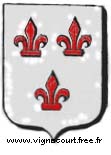
The Wignacourt's coat of arms
Racet Wignacourt
Racet took part in the battle of Mansourah in 1250. This city is located in northern Egypt, 120 km from Cairo. Saint Louis and the Count of Artois were among the combatants who had landed on the Nile Delta. The 3 fleurs-de-lys were acquired after this battle, with the agreement of King Louis IX, known as Saint Louis.
Wignacourt Alof
Alof de Wignacourt was born on July 15, 1547. He was elected Grand Master of the Order of Malta on February 10, 1601. He reigned from 1601 to 1622 for 21 years. He fortified the island against pirate attacks.
He built a precious aqueduct to bring water from an abundant source in the city of Malta towards the city of Valletta, opposite the Grand Master's Palace. The construction began in 1611 and lasted more than five years, with the participation of more than 600 workers. Valetta was one of the first world cities built in line with the Hippodamian plan.
Alof's father owned land in the Beauvais region, according to Maltese sources. The direct line of Alof died out in the 19th century. One of his descendants lived in Paris in the so-called Hotel de Wignacourt, which a few years later became the Belgian Embassy. Alof died in 1622 and was buried at the chapel of the Langue of France.
The Valletta Bank financed the restoration of Alof Wignacourt's ceremonial armor. The Minister of Education of Malta, Mr. Louis Galea, and Mr. Zahra, President of the Bank, celebrated the completion of the restoration during an official visit in 2002.

Painting of Alof, 54th Grand Master of the Knights of St. John,
by Caravaggio at the Louvre Museum in Paris.

Exhibition of masterpieces of the Malta Palace Armoury,
at the Hôtel National des Invalides in Paris (Army Museum),
which took place from October 21, 2008, to January 11, 2009.
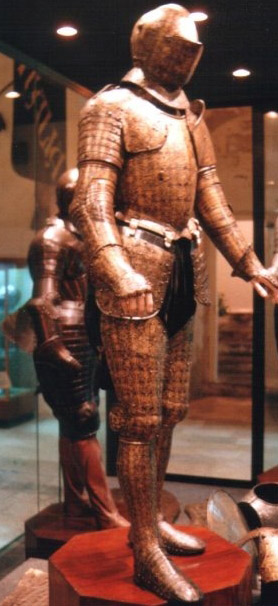
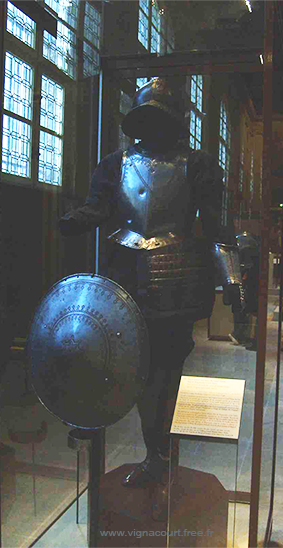
Photos of the ceremonial armor on the left and combat armor on the right,
with a combat mark and the shield that belonged to Alof Wignacourt.
WIGNACOURT Adrien
Adrien, the nephew of Alof, was appointed Commander of the Order of Malta in 1619, the 63rd Grandmaster of the Knights of St. John.
He contributed to the fortification of the island and the construction of the galley's arsenal. He took part in the reconstruction of Malta after the January 1693 earthquake and brought his help to Sicily, which had also suffered from the destruction.
He passed away on February 4, 1697, and was buried at the chapel of the French language in the Saint-Jean Co-Cathedral.
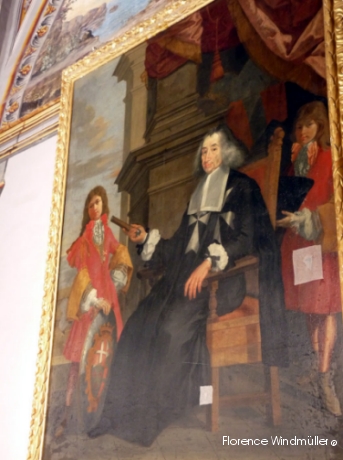
Painting depicting Adrien Wignacourt,
photo courtesy of Mrs. Florence Windmüller,
people of Vignacourt during 39 years, from 1966 to 1990.
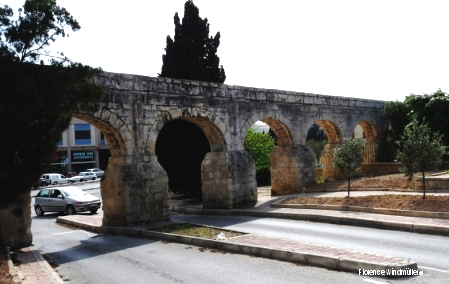
The Wignacourt aqueduct in Valletta was completed in 1616.
